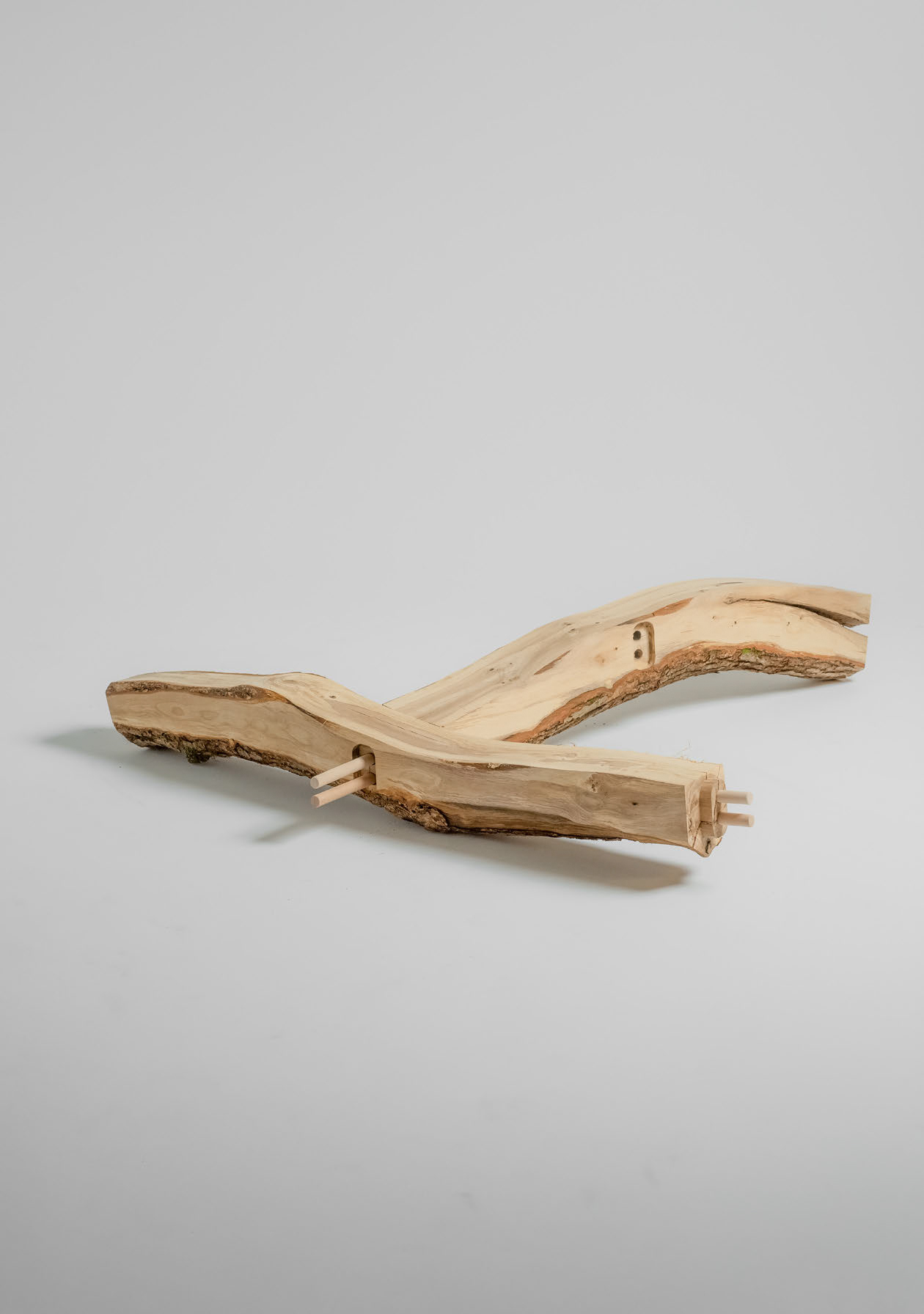Crooked Lamella
_
Anders Kruse Aagaard, Niels Martin Larsen + Lynn Hyun Kieffer, Aarhus School of Architecture
Crooked Lamella challenges today’s linear processing methods for wood and proposes customised machining processes informed by individual material properties. Through an investigative approach, material capacities and fabrication methods are explored and combined towards new workflows and architectural expressions, where material, fabrication and design are closely interlinked.
The current industry tries to reduce irregularly grown wood into standardised straight timber. During such processes, internal fibres of the wood are repeatedly cut, which leads to the sacrifice of structural strength (Bianconi and Filippucci, 2019; Hoadley, 2000). At the same time, even though the timber industry is using highly advanced geometrical analysis technologies to reduce wastage, a large amount of high-quality timber still ends up to be discarded as firewood or pulp.
Inspired by traditional naval and architectural construction methods (Neerso and Schantz, 1986), this research investigates how we could bring material properties and design closer together. It examines and leverages the grown material qualities and develops customised evaluation, design and fabrication approaches, based on the naturally occurring geometries. This method not only enhances such geometrical qualities but deploys the wood’s anisotropic and structural properties into the design.
The current focus of the research entails robotic machining of crooked oak logs which have been discarded by the timber industry due to their unusual shapes. Oak is a hardwood with excellent structural properties but tends to grow in irregular geometries. Through analysis and evaluation methods deploying 3D scanning tools, an informed digital workflow for individualised machining of each unique log is applied. The point clouds, describing a highly precise representation of the physical geometries of the oak logs, are simplified towards NURBS geometries to allow lightweight data-handling. Through a target-based computational approach, each sawlog matching to a particular curvature is designated to a given position in space, belonging to a larger whole as a structure. The method involves a discretisation process of a predefined target surface. It provides an interface between the design, structural qualities of the wood and the naturally grown properties of the material, altogether forming the architectural expression. According to the calculated centre curve of every individual log and their connecting neighbour-pieces, bespoke milling toolpaths are generated.
Through the rethinking of machining processes for sawlogs and custom-made methods for non-standard material, this research tries to identify approaches that can contribute to the reduction of waste products in the current industry. The process, at the same time, discovers unique aesthetic qualities and expressions of non-standardised wood directly explored through the 1:1 prototyping workflow.
References:
Bianconi, F., Filippucci, M., 2019. Digital wood design: innovative techniques of representation in architectural design.
Hoadley, R.B., 2000. Understanding Wood: A Craftsman’s Guide to Wood Technology, 1st edition. ed. The Taunton Press, Newtown, CT : Emeryville, CA.
Neerso, N., Schantz, G., 1986. A viking ship: “Roar Ege” a reconstruction of a trading vessel from the Viking Age. Breakwater, S.L.
_
Anders Kruse Aagaard_ is an architect and an Assistant Professor. Anders’ PhD and current research focus on the relationship between material properties and digital fabrication.
Niels Martin Larsen_ is an architect and an Associate Professor. Niels holds a PhD in computational design, algorithmic methodologies and design-to-production workflows.
Lynn Hyun Kieffer_ holds a Master of Architecture within the field of computation design. Lynn has a special interest in material behaviours.
Image: Lamella sub-element describes a part of a larger construction generated through a dialogue between designed geometry and naturally found shapes.
